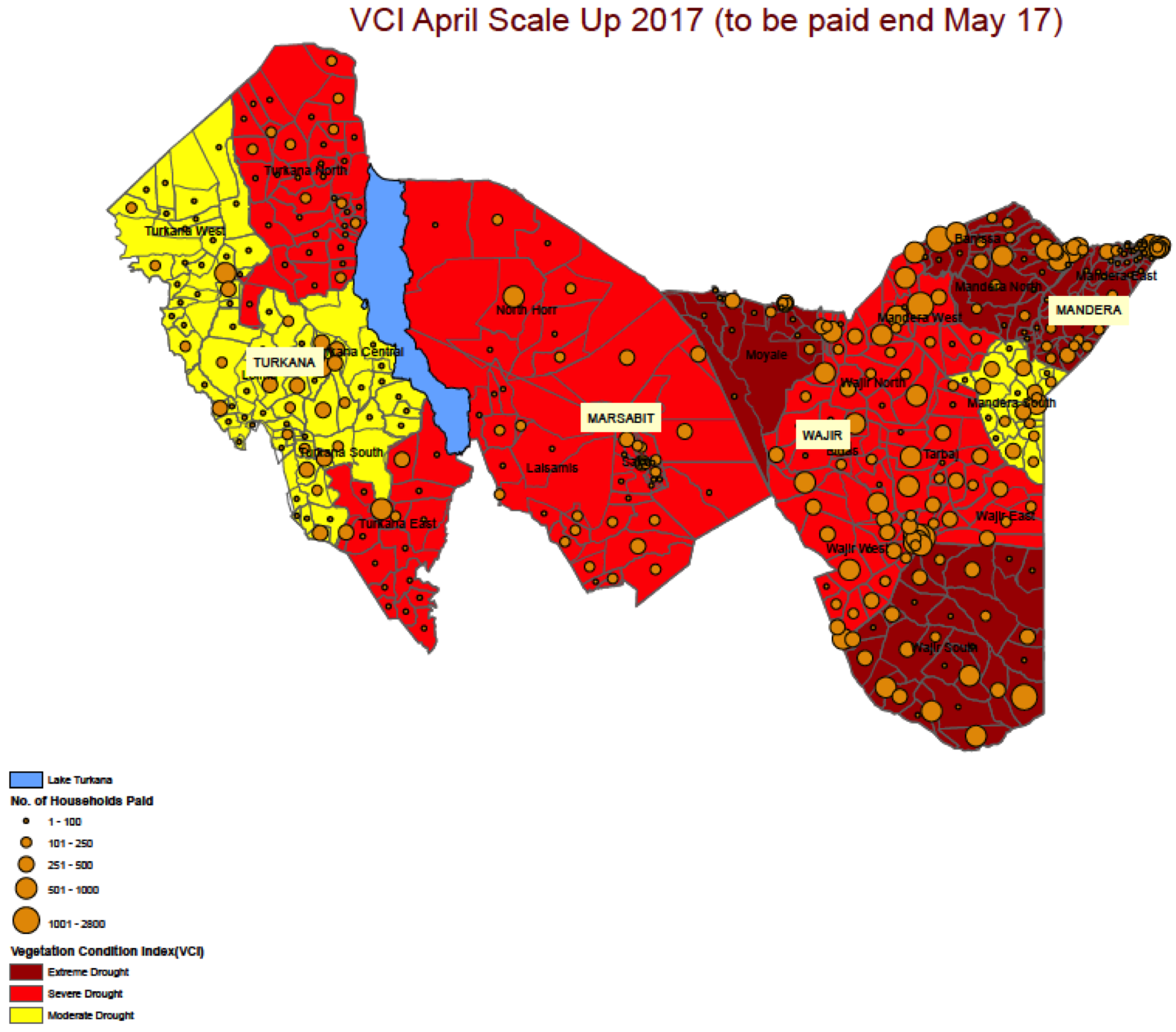 May 2017 Scale up CountyOn 23 June 2017, HSNP2 paid Kshs. 223,635,600 drought emergency cash transfers to additional 82,828 Group 2 households across the four arid counties of Turkana, Mandera, Wajir and Marsabit. Each household received Kshs. 2,700 equivalent to one month's entitlement. Thus, in the ongoing drought status, HSNP2 has scaled up six times since 2017. Scaling up during extremities of drought and flooding is one of HSNP2 core objectives. Total amount paid between November 2016 and June 2017 is Kshs. 0.977 billion (£7,521,597) to approx. 150,000 Group 2 households which is approx. 1million people in the four Counties. Emergency payments are funded by the Governments of Kenya, United Kingdom (UKAID) and European Union.
May 2017 Scale up CountyOn 23 June 2017, HSNP2 paid Kshs. 223,635,600 drought emergency cash transfers to additional 82,828 Group 2 households across the four arid counties of Turkana, Mandera, Wajir and Marsabit. Each household received Kshs. 2,700 equivalent to one month's entitlement. Thus, in the ongoing drought status, HSNP2 has scaled up six times since 2017. Scaling up during extremities of drought and flooding is one of HSNP2 core objectives. Total amount paid between November 2016 and June 2017 is Kshs. 0.977 billion (£7,521,597) to approx. 150,000 Group 2 households which is approx. 1million people in the four Counties. Emergency payments are funded by the Governments of Kenya, United Kingdom (UKAID) and European Union.
May 2017 scale up is triggered by the satellite generated Vegetation Coverage Index (VCI)  VCIMay2017report of end of April 2017. This report showcased that rainfall received in April across many parts of the ASALs has provided some reprieve, replenishing water sources and regenerating pasture and browse to some degree. Distances to water were reducing but are still well above normal. Livestock body condition and milk production were starting to improve, particularly among browsers, although the effect of the season on livestock productivity would be more apparent in the followingmonth. However, it warned that any positive impacts were likely to be modest and short-lived, since the expected short rains had generally been below normal and poorly distributed and therefore unlikely to sustain recovery throughout the coming dry period. Moreover, some areas have received very little rainfall and even none, like Mandera, Wajir, Marsabit and Turkana.
VCIMay2017report of end of April 2017. This report showcased that rainfall received in April across many parts of the ASALs has provided some reprieve, replenishing water sources and regenerating pasture and browse to some degree. Distances to water were reducing but are still well above normal. Livestock body condition and milk production were starting to improve, particularly among browsers, although the effect of the season on livestock productivity would be more apparent in the followingmonth. However, it warned that any positive impacts were likely to be modest and short-lived, since the expected short rains had generally been below normal and poorly distributed and therefore unlikely to sustain recovery throughout the coming dry period. Moreover, some areas have received very little rainfall and even none, like Mandera, Wajir, Marsabit and Turkana.
Read NDMA Bulletin Report April 2017
According to the external HSNP2 impact qualitative report released in June 2017 by Oxford Policy Management, HSNP households that receive emergency cash transfers in the event of severe drought report positive effects on meeting short-term basic needs such as retaining children in school, maintaining food consumption, and spending on healthcare.
